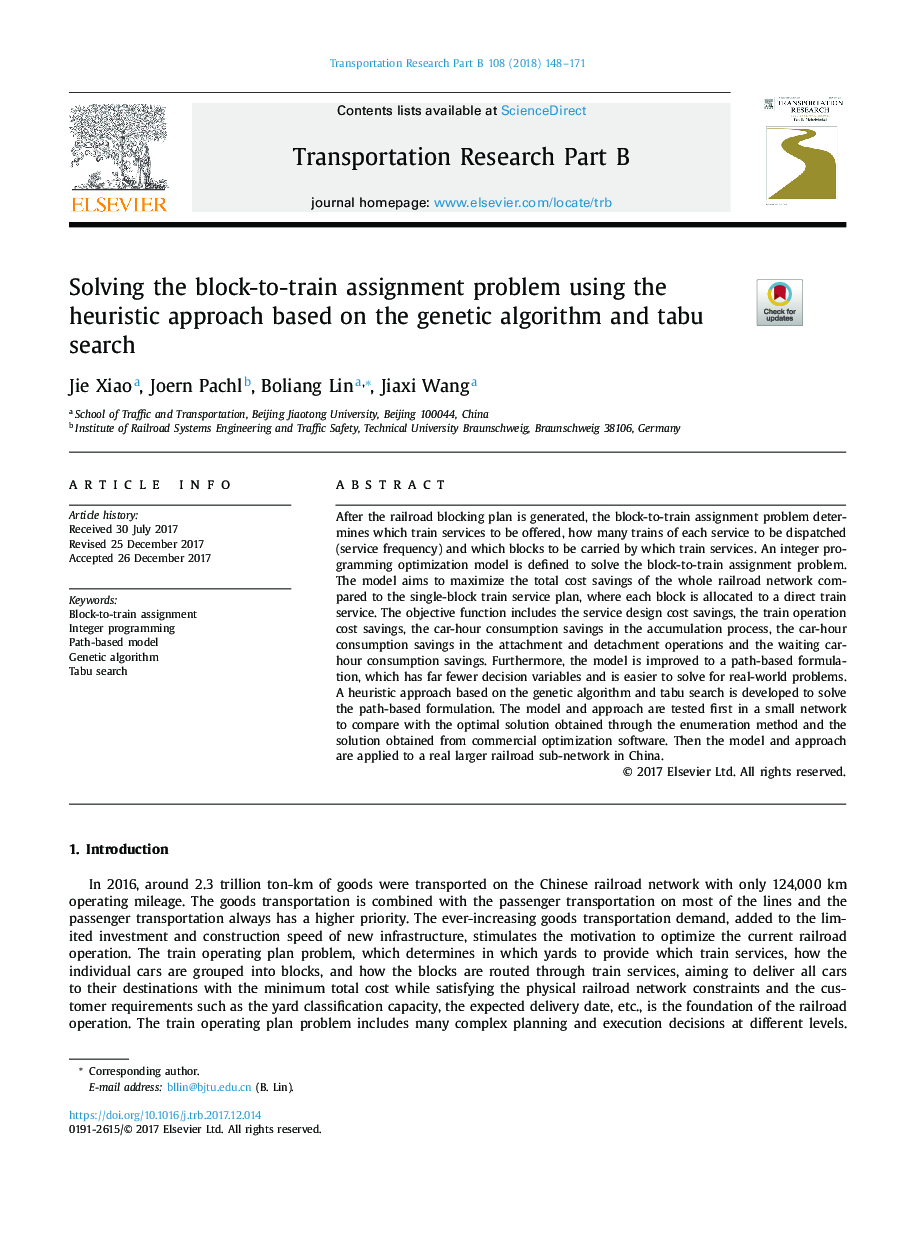| Article ID | Journal | Published Year | Pages | File Type |
|---|---|---|---|---|
| 7539205 | Transportation Research Part B: Methodological | 2018 | 24 Pages |
Abstract
After the railroad blocking plan is generated, the block-to-train assignment problem determines which train services to be offered, how many trains of each service to be dispatched (service frequency) and which blocks to be carried by which train services. An integer programming optimization model is defined to solve the block-to-train assignment problem. The model aims to maximize the total cost savings of the whole railroad network compared to the single-block train service plan, where each block is allocated to a direct train service. The objective function includes the service design cost savings, the train operation cost savings, the car-hour consumption savings in the accumulation process, the car-hour consumption savings in the attachment and detachment operations and the waiting car-hour consumption savings. Furthermore, the model is improved to a path-based formulation, which has far fewer decision variables and is easier to solve for real-world problems. A heuristic approach based on the genetic algorithm and tabu search is developed to solve the path-based formulation. The model and approach are tested first in a small network to compare with the optimal solution obtained through the enumeration method and the solution obtained from commercial optimization software. Then the model and approach are applied to a real larger railroad sub-network in China.
Related Topics
Social Sciences and Humanities
Decision Sciences
Management Science and Operations Research
Authors
Xiao Jie, Pachl Joern, Lin Boliang, Wang Jiaxi,
